The Bay Area has long been a breeding ground for Hip Hop innovation, cultivating a sound that is as diverse as the communities it represents. From the streets of Oakland to the studios of Vallejo, the region has delivered music that is raw, inventive, and deeply rooted in lived experiences. Each album carries a distinct personality, shaped by local slang, regional beats, and the Bay’s unmistakable energy. Whether it’s the trunk-rattling basslines of the hyphy movement or the smooth introspection of underground lyricists, the Bay’s Hip Hop reflects a rich mosaic of creativity and resistance.
The sounds here defy easy categorization. Funk, soul, and mob music intermingle with electronic flourishes, creating records that feel grounded and futuristic all at once. Lyrically, the artists don’t shy away from speaking truth to power, but they also embrace storytelling, humor, and the art of having fun. This duality—serious and playful, hard-hitting and celebratory—infuses the music with a vitality that has made the Bay Area a distinctive voice in Hip Hop for decades.
This list of 25 albums highlights the breadth and depth of Bay Area Hip Hop, with a focus on Bay Area Hip Hop’s earliest periods that have shaped the culture and inspired future generations. From classics that defined eras to underground gems that deserve more attention, these selections span years of innovation and artistry. They reflect the sound of a region that has always danced to its own rhythm—bold, creative, and unapologetically authentic. Whether you’re revisiting these albums or discovering them for the first time, this exploration of Bay Area Hip Hop offers a window into the heart of a scene that continues to thrive on its own terms.
Too $hort - Born To Mack (1987)
Released independently on the Dangerous Music label before catching the attention of Jive Records, Too $hort’s major label debut was a direct reflection of its Oakland roots: bold, unfiltered, and built for the trunks of cars cruising through the city. Born to Mack is a rough but essential release in the history of Hip Hop, particularly for the Bay Area scene. While not Too $hort’s best work—his later albums, like Life is…Too Short or Shorty the Pimp, would bring out more complexity and polish—this album holds a particular weight in shaping both his career and the sound of West Coast rap. Released in 1987, it expanded his reputation far beyond Oakland, thanks to its stark, bass-heavy beats and his unmistakable voice.
This is a straightforward album in terms of its sound: simple, minimal beats built around drum machines and sparse instrumentation that leaves space for Too $hort’s unmistakable delivery. His vocals, laid back and blunt, became a signature part of his style. Tracks like “Mack Attack” and “Dope Fiend Beat” introduce the kind of street-level raunch that Too $hort would continue to exploit throughout his career, where sexuality and bravado blend seamlessly into the production. The beats are deliberately heavy and slow, made to be played loudly in cars, rattling the windows with sub-bass tones.
But it’s the storytelling that stands out most. Born to Mack is where Too $hort’s persona fully takes shape, and “Freaky Tales” stands as one of his defining tracks. At over nine minutes long, the track is filled with brash, explicit tales of sexual escapades, becoming one of the longest—and most famous—songs in his catalog. The long, deliberate pacing of the song matches the tone of the lyrics, with Too $hort’s slow drawl bringing the stories to life in vivid detail. While the content of the track is undeniably explicit, it’s also one of the first times that Hip Hop leaned so unapologetically into these themes, and it left a lasting imprint on the genre. The song’s bass-heavy rhythm is as much a part of its iconic status as the subject matter itself, influencing countless artists from the Bay Area and beyond.
However, the album also has its troubling moments. “Little Girls,” for instance, includes a narrative where Too $hort warns against pursuing young girls who may not be as old as they appear. While the cautionary angle could have been more impactful, the way it is presented feels uncomfortably cavalier at times, and the language can be jarring to some. It’s clear that Born to Mack mixes its playful, exaggerated persona with problematic moments, revealing the limits of the raw, unfiltered style it cultivates.
All said, while Born to Mack may not be Too $hort’s finest moment musically or thematically, it’s a touchstone in his career. It’s a blueprint for a sound that became synonymous with West Coast rap and firmly placed Too $hort on the map, influencing generations of artists who would follow.
Too $hort - Life Is... Too Short (1988)
By the late ’80s, Hip Hop was a bicoastal game, with New York shaping its core and Los Angeles erupting with a harder, more controversial sound. Then came Life Is… Too Short, Too Short’s breakout album, straight from Oakland, where the bass hit heavy and the hustle mentality ran deep. Released in 1988, this record didn’t merely represent the Bay—it defined it.
From the opening notes of the title track, the tone is set: thick, funky basslines pulled straight from the Parliament-Funkadelic era, matched with Too Short’s blunt storytelling and unshakable confidence. The title song doubles as a philosophy, with Short Dog reminding listeners to take life for what it is, all while riding one of the smoothest grooves Hip Hop had heard at the time. If you grew up in Oakland, you didn’t need the reminder—it was already gospel.
Life Is… Too Short blends lowrider-ready funk with a stripped-down production style, giving Too Short’s unmistakable delivery plenty of room to breathe. Tracks like “Cusswords” let him flex his love for profanity as a form of art, turning foul-mouthed rhymes into something almost playful. Then there’s “City of Dope,” a grimier, more sobering track about Oakland’s drug culture—Too Short never sugarcoats, even as the bassline grooves underneath.
“Nobody Does It Better” and “Oakland” carry the same laid-back, confident vibe, but this isn’t music you only listen to—it’s music that takes over the whole block. Short’s voice is as much an instrument as the beats he rhymes over: slow, deliberate, and completely unflinching. While rappers on the East Coast were leaning on dense wordplay, Too Short kept it simple and direct, ensuring the message hit harder.
It’s important to note that Too Short’s lyrics have always walked a controversial line. The album’s themes include relentless braggadocio and a heavy dose of misogyny—hallmarks of his work that some listeners embraced and others criticized. At the same time, his ability to bring raw truths about Oakland’s streets into the mainstream created a space for Bay Area Hip Hop in a way no one else had done before.
In hindsight, Life Is… Too Short wasn’t a fluke—it was a blueprint. It laid the groundwork for Too Short’s next decades of releases, including classics like Short Dog’s In the House (1990), Shorty the Pimp (1992), Get In Where You Fit In (1993), and Cocktails (1995), albums that could easily dominate any essential Bay Area Hip Hop list—and that arguably should have been included here, but that we’ve left off to make room for artists besides Too Short too.
There’s no denying though that this one, with its raw funk grooves and unfiltered honesty, made Too Short a household name and changed the course of West Coast rap.
Digital Undergrond - Sex Packets (1990)
When Sex Packets dropped in 1990, it introduced listeners to a world of outlandish humor, funky beats, and a bizarre concept that still stands out in Hip Hop history. Digital Underground, led by Shock G, had a knack for blending satire with sexuality, and this album fully embraces that mix. At its core, Sex Packets is about a fictional drug, G.S.R.A., that promises to unlock any sexual fantasy—perfect for astronauts and party-goers alike. The concept might sound out there, but it provides the framework for an album that’s as inventive as it is infectious.
The album kicks off with “The Humpty Dance,” a track that immediately sets the tone with its playful spirit and Humpty Hump’s wild, comical persona. The beat is funky, lighthearted, and impossible to ignore—an instant classic that would live on in countless parties and TV shows. This carefree vibe flows through the album, with songs like “Doowutchyalike” encouraging listeners to let loose without worrying about anything else. The mood is upbeat, with digital and live elements coming together to create something full of energy and charm.
Musically, Sex Packets draws heavily from P-Funk, offering a foundation of bass-heavy grooves and funky horns, but it’s infused with a unique twist that’s distinctly Digital Underground. Tracks like “Freaks of the Industry” lean into the slower, seductive side of their sound, offering a contrast to the more frantic energy of other songs. Yet, the beats always remain vibrant and engaging, keeping the album from feeling too one-note. The combination of smooth funk and playful rap brings out a balance that stays fresh from start to finish.
What truly elevates Sex Packets is the sense of fun that permeates throughout. The group’s humor is never forced—it’s as much a part of their identity as the beats themselves. “Packet Prelude” and “Sex Packets” delve deeper into the drug concept, adding absurdist humor and cheeky commentary on freedom and desire. Digital Underground never shies away from the silliness, but their wit adds depth to the experience, making it something you can revisit without losing its charm.
Sex Packets might not be the most serious album in Bay Area Hip Hop, but it’s one of the most entertaining. Its blend of humor, funk, and creativity made it a defining piece of West Coast music and helped carve out a space for more experimental, playful acts in the genre. This is one of those albums that demands to be played loud, letting every joke and every beat hit just right.
Paris - The Devil Made Me Do It (1990)
Paris’s The Devil Made Me Do It is a raw, in-your-face album that refuses to sugarcoat its message. It opens with the chilling “Intro,” a somber reflection on systemic racism, setting the stage for an album brimming with political fury. Paris isn’t here to entertain, he’s here to speak directly to the injustices he sees around him, a stance that’s evident throughout the record. His voice is commanding, a deep, rumbling presence that makes each line feel like a call to arms.
The beats are hard-hitting and unapologetically funky, driven by heavy basslines that keep the energy tense and charged. Songs like “Scarface Groove” and “Panther Power” establish an aggressive, militant tone that mirrors Paris’s unwavering stance on the issues he addresses. His production blends classic funk and soul samples with the kind of bass-driven sound that gives the album an edge. The combination of slick samples and pounding drums creates a soundscape that’s both gritty and undeniably catchy. The music does not apologize for its intensity—it’s all about making a statement, and the production never lets you forget that.
Lyrically, Paris is relentless, using every track to push his point further. “Panther Power” is an anthem of Black empowerment, its bass-heavy beat underlined by the sampled voice of Bobby Seale, invoking the spirit of the Black Panther Party. Similarly, “Break the Grip of Shame” mixes introspection with social critique, yet it feels slightly at odds with the album’s typically hard-hitting tone due to its danceable groove. These moments of contrast bring some dynamism, offering listeners brief relief from the intensity of the other tracks.
“Ebony” offers a softer moment, celebrating Black beauty and pride, a temporary departure from the anger and frustration that characterizes much of the album. Yet even in its smoothness, the track maintains Paris’s fierce pride, showing that his vision of empowerment isn’t all about struggle—it’s about celebration too.
By the time “Escape from Babylon” and “Wretched” roll around, the mood shifts into something more reflective, with Paris grappling with themes of Black consciousness and systemic oppression. Throughout the record, his lyrics challenge listeners to think critically about the world around them, using Hip Hop as a platform for revolutionary thought. With The Devil Made Me Do It, Paris sets a high bar for politically conscious Hip Hop, proving that the Hip Hop could—and should—be more than just entertainment.
2Pac – 2Pacalypse Now (1991)
Released in 1991, 2Pacalypse Now marked the beginning of 2Pac’s transformative career, capturing his early passion for addressing deep social issues with urgency and raw emotion. Brooklyn-born and Baltimore-raised, 2Pac moved to Oakland as a teenager, where he would later start his Hip Hop journey as part of Digital Underground’s entourage. The album reflects the gritty realities of Oakland’s streets, where 2Pac found his voice and set his sights on exposing the struggles of young black men through powerful, unflinching lyricism.
Musically, 2Pacalypse Now has a rough-edged, drum-heavy sound typical of early ’90s West Coast Hip Hop. The beats often feel sparse, punctuated by harsh synths that provide a sense of urgency, aligning with the seriousness of 2Pac’s message. Though the production can feel muffled at times, it complements the raw, unpolished nature of 2Pac’s delivery, setting the tone for an album that’s anything but easy listening.
The mood is relentlessly serious. From the first track, “Young Black Male,” 2Pac dives into the harsh realities of life in the ghetto, confronting issues like police brutality, systemic oppression, and poverty. On tracks such as “Trapped” and “Soulja’s Story,” he paints vivid pictures of young black men caught in cycles of violence and hopelessness, with no clear escape. These songs don’t offer simple solutions but instead invite listeners to reckon with the complex, often tragic lives of those living in urban America.
A deeply personal side of 2Pac emerges as well. On “Brenda’s Got a Baby,” he tells the story of a teenage girl trapped in an unthinkable situation, her choices limited by circumstances beyond her control. Tracks like “Violent” and “Words of Wisdom” blend personal reflection with fierce social critique, urging action and a reckoning with the systemic issues that plague black communities.
Though 2Pac’s flow was still evolving, with moments of erratic delivery, his sincerity and emotional depth were already clear. The album was never about catchy hooks or radio-friendly singles; it was about provoking thought, raising awareness, and inspiring change. While some of the beats may not have aged well, the urgency of 2Pac’s message still resonates, making 2Pacalypse Now a crucial piece of Bay Area Hip Hop history.
Del The Funky Homosapien - I Wish My Brother George Was Here (1991)
When Del Tha Funkee Homosapien dropped I Wish My Brother George Was Here in 1991, it introduced a different side of West Coast Hip Hop, one that wasn’t about gangsta bravado or harsh realities but about humor, everyday observations, and a laid-back vibe. The album sounds like a trip through Del’s quirky head, blending funk and offbeat samples with his distinct voice and sharp wit. At a time when Hip Hop was mainly about the extremes, Del took a more chilled approach, drawing influences from both his famous cousin Ice Cube’s aggressive West Coast style and the playful, jazzy vibes of East Coast groups like De La Soul.
The production, largely crafted with help from Ice Cube, mixes funky basslines and cartoonish samples, most notably from Parliament and George Clinton’s P-Funk. This is most apparent in tracks like “Mistadobalina” and “Dr. Bombay,” where the beats roll like something you’d hear in a late-night cartoon, but the rhymes are delivered with a sense of purpose. Del raps about everyday life—the struggles of dealing with deadbeat friends crashing on his couch in “Sleepin’ On My Couch,” or the frustration of public transit in “The Wacky World of Rapid Transit”—with a nonchalant, humorous spin. There’s an ease to his flow, as though he’s talking you through his day rather than spitting bars in the traditional sense.
Del also takes playful shots at other rappers and societal norms. In “Pissin’ On Your Steps,” he takes jabs at Vanilla Ice and MC Hammer, but he’s doing it in a laid-back way, almost as if he’s lounging while throwing verbal darts. Even when addressing serious themes, like in “Hoodz Come in Dozens,” he keeps a level-headed approach, suggesting that material possessions aren’t worth fighting over when life is at stake.
What stands out is how Del makes his world feel real without taking things too seriously. It’s a bit absurd at times, but that’s the charm. I Wish My Brother George Was Here isn’t about loud declarations or political statements—it’s about getting by with a smile and a bit of funk. This album paved the way for the underground sound that would follow and set Del on a unique path in Hip Hop.
Digital Underground - Sons Of The P (1991)
Digital Underground’s Sons of the P doesn’t simply pick up where Sex Packets left off—it flips the script with a richer, more experimental vibe. While the group still rides on the fun, funky energy that made their debut such a hit, this album feels deeper, more thought-out, and layered with a range of moods that move beyond partying and sex. From the first track, “The D-Flo Shuttle,” it’s clear this isn’t just a collection of catchy singles but something with a more cohesive feel. The track starts off light, almost whimsical, but quickly introduces the recurring themes that make up the album: an embrace of P-Funk’s cosmic funk with a touch of self-reflection.
The album’s sound is thick with layers. The bass hits hard and the beats don’t shy away from a bit of experimentation. Funkadelic’s influence is all over, especially in tracks like “Heartbeat Props,” where the group flips a Funkadelic sample into something both smooth and charged with political weight. The vibe moves from party-ready to almost militant in tone, as the group calls attention to Black leaders pushing for change in their communities. It’s a moment of urgency that sticks out against the funk grooves.
Humpty Hump gets his own time to shine with “No Nose Job,” a playful yet pointed track that takes jabs at the pressures of conforming to mainstream beauty standards, specifically targeting Black celebrities who’ve altered their looks. It’s humor with a message, and even when Humpty’s clowning around, there’s a sense of purpose underneath the fun. He’s still the same wild character from Sex Packets, but this time, he’s got a bit more to say.
The real centerpiece of the album is the title track. “Sons of the P” stretches past nine minutes, blending various sounds—chants, spoken word, piano stabs—into a slow burn of a track that could’ve been trimmed, but still pulls you in with its infectious groove. The appearance of George Clinton adds weight to the track, as the funk legend gives his stamp of approval to the group as rightful heirs to his legacy.
Despite some of the tracks feeling a bit too drawn out, like “Sons of the P” and “Good Thing We’re Rappin’,” the album’s mood doesn’t falter. There’s a cohesiveness to it, even as the sound sways from heavy funk to introspective moments. Sons of the P might not have the same immediate bangers as Sex Packets, but it’s a record that gives you more to chew on, with tracks that offer humor, social commentary, and pure funk. This is an album that not only pays respect to its roots but takes the sound further.
Spice 1 – Spice 1 (1992)
Spice 1’s self-titled debut album, released in 1992, is a quintessential entry in Bay Area gangsta rap, rooted in hard-hitting storytelling and funky, bass-heavy production. Emerging from Oakland, Spice 1 quickly established himself as a prominent voice in the West Coast scene, thanks in part to his unique flow and vivid, often violent lyrics that paint a grim picture of street life.
The album is built around laid-back, yet punchy beats, many of which come courtesy of Ant Banks, whose contributions shape much of the album’s sound. The tracks pulse with low-end bass, crisp snares, and occasionally eerie synths, evoking the same smooth, funk-driven vibes that would later dominate much of Bay Area Hip Hop. This production style is particularly noticeable on cuts like “In My Neighborhood,” which rides a jazzy, skeletal drum pattern, and “Money Gone,” where Spice’s stuttering flow injects an unexpected energy into the track. These beats create a perfect backdrop for Spice’s brash and often dark lyricism.
Lyrically, Spice 1 sticks to the streets, diving deep into tales of murder, drugs, and survival. The imagery is raw, unflinching, and frequently unsettling, especially in tracks like “187 Proof,” where he crafts a twisted narrative of liquor-inspired characters meeting their violent ends. What stands out about Spice 1, however, is the way he balances his aggressive content with clever storytelling and engaging delivery, never glorifying the violence, but instead reflecting on its harsh reality. Even on tracks like “Welcome to the Ghetto,” where he briefly dips into social commentary, the grimness of the environment dominates his perspective.
Throughout the album, Spice’s flow shifts between rapid-fire delivery and more laid-back, almost conversational moments, demonstrating his versatility. On tracks like “East Bay Gangster” and especially “1-800-Spice,” he even experiments with a reggae-inflected flow, adding another layer to his style.
Spice 1 is not an album for the faint of heart, but it is undeniably a major piece of the Bay Area’s Hip Hop legacy. Its heavy basslines, gritty tales, and compelling flow remain a defining feature of 90s West Coast rap, and Spice’s debut would go on to become a blueprint for his subsequent work, his sophomore LP 187 He Wrote an album that could have been listed here too.
Mac Dre - Young Black Brotha: The Album (1993)
In 1993, Young Black Brotha: The Album dropped and became one of the defining sounds of Vallejo. Mac Dre, who would later become a Bay Area legend, delivered a debut full of sharp wit, laid-back cool, and funk-drenched production that gave his neighborhood a voice. Dre’s style is as breezy as it is confident, mixing playful charisma with a street-level edge. His rhymes slide effortlessly across the beat, brimming with humor, game, and a rhythm that feels second nature—like someone talking smack and winning without trying.
Much of the album’s magic comes from Khayree, whose production gives Dre the perfect canvas to work with. His beats pull from funk and jazz, pairing thick basslines with clean snares and just enough melody to keep your head nodding. Tracks like “2 Hard 4 The F***in’ Radio” balance a punchy beat with Dre’s slick delivery, while “Young Black Brotha” brings in a jazzy horn loop that gives the track a reflective, almost mournful undertone. Meanwhile, “All Damn Day” rolls with a smooth, melodic groove, showing Khayree’s knack for switching things up while staying rooted in the Bay’s funk tradition.
Lyrically, Dre keeps it direct. He macks, brags, and tells stories with a sly grin and a natural rhythm that makes even the smallest details stick. He wasn’t a polished star in 1993—he was a kid with raw talent, charm, and a knack for riding a beat in a way that made everything sound easy. Tracks like “I’m N Motion” bring a harder edge, showing Dre’s versatility, but his sense of humor and style never falters. What makes it all more poignant is knowing that parts of this album were recorded over the phone while Dre was locked up, caught in a system that defined so much of the reality he rapped about.
Mac Dre was killed in 2004 after a prolific decade of record releases, but Young Black Brotha remains one of the best records to show his potential and charisma. While it didn’t break into the mainstream, the album’s influence spread far beyond Vallejo, laying the foundation for a Bay Area sound that still carries Dre’s spirit today.
Mac Mall – Illegal Business? (1993)
Mac Mall’s Illegal Business? hit Vallejo in 1993 like a summer breeze laced with gasoline—smooth, heavy, and explosive all at once. At only 18 years old, Mac Mall showed up ready, wielding slick, melodic flows and streetwise lyricism that set him apart. While his rhymes stay rooted in gangsta themes—hustling, survival, and ambition—his delivery brings a kind of confidence that’s cool without trying too hard. There’s an ease to his voice, but he’s sharp with the pen, pulling listeners into stories about Bay Area life without any wasted energy.
What ties the whole album together is Khayree’s production. The beats are thick and warm, drenched in funk and G-Funk influences without feeling like imitations of anything else on the West Coast at the time. Khayree plays with low, rumbling basslines, crisp drums, and shrill synths that whine and ripple across each track. The combination gives Illegal Business? its unique edge—it’s laid-back but always knocking, with a sound that feels alive and direct. Tracks like “Sic Wit Tis” and “I Gots 2 Have It” hit hard with deep grooves, while “Ghetto Theme” rolls in on a slower tempo, smooth and reflective. Even with a runtime pushing 75 minutes, the album never drags, thanks to Khayree’s consistency and Mac Mall’s sharp instincts on the mic.
Lyrically, Mall balances swagger with storytelling. Songs like “Cold Sweat” and “Da Bank Heist” lean into vivid narratives, showing off his ability to paint scenes without losing rhythm. Elsewhere, he dips into political and social observations, giving weight to tracks like “Versatile” without ever sounding preachy. There’s always an energy to what he’s saying, even when the tone turns serious.
Illegal Business? helped define the sound of Vallejo and the Bay’s independent scene. It’s a cornerstone for anyone who wants to understand the mix of hustle, funk, and lyricism that makes Bay Area Hip Hop its own. From start to finish, Khayree and Mac Mall delivered an album that sounds as alive today as it did back in ’93.
Del – No Need For Alarm (1993)
Del tha Funkee Homosapien’s No Need for Alarm dropped in 1993 like a sharp left turn, peeling away from the playful P-Funk of his debut into darker, jazz-inflected boom-bap. Instead of riding the G-Funk wave that dominated the West Coast, Del doubled down on a grittier, East Coast-adjacent sound. It wasn’t a compromise. It was a declaration—one that gave Del space to sharpen his craft and let loose relentless, tongue-twisting rhymes.
The beats, handled entirely by Del and his Hieroglyphics crew, carry a raw and hypnotic energy. Tracks like Catch a Bad One and Wrongplace hit heavy, pairing grimy basslines with layers of strings and dusty drums. Del attacks every pocket of the production with an easy confidence, twisting words into rhythmic shapes that bounce with precision. It’s not about hooks or choruses—this is straight, unfiltered lyricism with verses unspooling like endless battles.
Where I Wish My Brother George Was Here felt lighthearted, No Need for Alarm builds its energy from tension. You’re in Shambles opens the album with a sharp-edged beat and a sense of urgency that never lets up. Wack M.C.’s sees Del picking apart his competition with pinpoint accuracy, while Boo Boo Heads dips into personal frustration without losing its punch. The humor is still there, but it’s laced with something sharper—each jab hits harder, each line pulls you closer.
The album doesn’t wander much from its battle-rap backbone, and that consistency can feel relentless by the end. But Del’s effortless delivery and the album’s gritty mood keep things moving. Even when the production grows sparse or repetitive, Del’s wordplay is the draw, his rhymes bending around the beat like they’re meant to coexist.
No Need for Alarm put a spotlight on Del’s lyrical dexterity and cemented the Hieroglyphics crew as a force in underground Hip Hop. It stands as a defiant pivot, rejecting expectations and favoring something stripped-down, raw, and deeply lyrical. In 1993, it was unmistakably ahead of its time—years later, its energy still hits with the same unapologetic sharpness.
Souls Of Mischief - 93 'Til Infinity (1993)
By the early ‘90s, West Coast Hip Hop had carved a reputation through gritty street stories and funk-heavy beats. Then came Souls of Mischief, four sharp-minded teenagers from Oakland who brought something entirely different with 93 ‘Til Infinity. Where others sounded relentless and aggressive, this record floated with a laid-back cool that felt effortless.
The album pulls you in with its opening track, “Let ‘Em Know”, where A-Plus, Opio, Tajai, and Phesto trade verses like a cipher spilling onto wax. Their flows twist and turn, intricate but never forced. Instead of telling tales of hardened street life, they spin clever rhymes about their everyday experiences with a playful, youthful energy. It’s a record made for open windows and long afternoons, perfect for heads nodding in unison.
The production, largely handled by A-Plus and other Hieroglyphics affiliates like Domino and Jay-Biz, is drenched in jazz loops and mellow basslines. Tracks like “That’s When Ya Lost” and “Never No More” hum with light, hypnotic melodies, a sharp contrast to the driving, funk-heavy sound dominating the Bay Area at the time. The iconic title track, “93 ’Til Infinity”, might be one of the smoothest songs to ever come out of California, a timeless anthem that skips across a warm beat and showcases the crew’s uncanny chemistry.
93 ’Til Infinity is easygoing without being lazy, and confident but never arrogant. Each MC brings a distinct voice, both in tone and delivery, trading rhymes with an almost telepathic precision. The lyrics are rich in detail, balancing wry humor with introspection. Songs like “What A Way To Go Out” explore darker moments without losing the album’s unshakeable groove, and “Make Your Mind Up” feels almost meditative, gliding over a fluid, bass-heavy beat.
In a year dominated by harder edges, 93 ’Til Infinity carved its own lane. Souls of Mischief delivered a debut that sounded timeless and ahead of its moment—a record with an unmistakable sense of place, one that offered Oakland’s Hip Hop scene a new face and an entirely different sound.
The Coup – Genocide & Juice (1994)
The Coup’s Genocide & Juice is a funk-drenched, razor-sharp response to the inequities of America, delivered with biting humor and revolutionary intent. Released in 1994, the Oakland-based group’s second album blends live instrumentation with storytelling that’s both satirical and unflinchingly real. Boots Riley, along with E-Roc and DJ Pam the Funkstress (RIP), crafts a world where the personal and political collide on the dancefloor of capitalism.
The sound is rooted in funk, with basslines that slink and groove while drums punch through like heavy footsteps on a city block. It’s a sound as rich and live as anything coming out of the Bay at the time, echoing the influence of Parliament and James Brown while nodding toward the gangsta funk that dominated the West Coast. But Genocide & Juice takes that sound somewhere else: it’s playful, theatrical, and deadly serious, often all on the same track.
Boots’ storytelling pulls you straight into his nightmarish carnival of American excess. On “Fat Cats, Bigga Fish,” a pickpocket slips into a high-society event, only to realize he’s nothing compared to the billionaires running the show. The track swings with a lazy funk, its smooth groove underscoring Boots’ sharp commentary on how real hustlers aren’t in the streets but in the boardrooms. The punchline hits with “Pimps (Free Stylin’ at the Fortune 500 Club),” a surreal send-up where oil tycoons and Trump rap like gangsters. Boots and E-Roc’s delivery plays it so straight it’s chilling—a twisted reminder of where real power lies.
Elsewhere, the album refuses to settle into one note. “Santa Rita Weekend” is a somber bluesy jam featuring E-40 and Spice 1, reflecting on incarceration and its toll. “Takin’ These” flips the script into militant robbery with a funk track that’s impossibly smooth under its incendiary lyrics. Throughout, Pam the Funkstress punctuates the chaos with cuts that demand attention, grounding the music in Hip Hop’s raw tradition.
Genocide & Juice is a mirror—one that exposes, mocks, and dances through the contradictions of a system built to fail the many for the gain of the few. The Coup doesn’t moralize; they embody, inhabit, and dismantle America’s mythologies with grooves that slap and stories that sting. It’s Hip Hop with purpose and funk with teeth, a Bay Area essential that still rumbles decades later.
Saafir – Boxcar Sessions (1994)
Saafir’s Boxcar Sessions is one of the strangest and most fascinating records to emerge from the Bay Area during Hip Hop’s creative prime. In an era when West Coast rap was dominated by G-funk’s glossy bounce and gangster narratives, Saafir, alongside his Hobo Junction crew, carved out something entirely different—something raw, abstract, and intentionally off-kilter. The Oakland MC didn’t so much rap as he performed his words, twisting syllables into jagged, unpredictable patterns that sounded like they were constantly stumbling but somehow never fell. It was chaotic, gripping, and oddly deliberate, a reflection of Saafir’s willingness to experiment at the risk of alienation.
At the album’s core was a voice unlike any other—gravelly, snarling, and deeply unorthodox. Saafir’s flow lurched and stopped without warning, delivering lines like shards of broken glass: sharp, scattered, and often confounding. He wasn’t rapping for the crowd. He was speaking to those willing to keep up, challenging listeners to piece together his stream-of-consciousness rhymes. On “Light Sleeper”, he laid bare the contradictions of his mind, sounding part manic, part reflective: “I know I’m an emotionally disturbed person / People think I’m talkin’ to myself when I’m rehearsin’.” It was a glimpse into something unstable, yet deeply intentional—an MC wrestling with his thoughts in real time.
Musically, Boxcar Sessions felt closer to the East Coast’s underground scene than Oakland’s funk-heavy soundscape. Producers DJ Jay-Z and J-Groove built dark, jazzy instrumentals laced with creeping basslines and murky samples. Tracks like “Can-U-Feel-Me?” and “Swig of the Stew” gave Saafir space to experiment, his delivery ducking and weaving through beats that felt both minimal and claustrophobic. The production wasn’t polished, but it matched Saafir’s vision perfectly: angular, unpolished, and full of tension.
Saafir, who passed away in November of 2024, may have been an outsider—an MC too eccentric for mainstream attention—but Boxcar Sessions solidified his place as one of the Bay Area’s most unique voices. The record is a rare document of an artist unafraid to take risks, offering a raw, challenging perspective on Hip Hop’s possibilities. Saafir was never easy to pin down, and that’s exactly why his work remains unforgettable.
Casual - Fear Itself (1994)
Casual’s 1994 album Fear Itself captures a moment in Bay Area Hip Hop that blends bold swagger with raw lyricism. Anchored by the heavy presence of Casual’s deep, commanding voice, the album demonstrates his talent for delivering brash battle raps, taunting rivals and boasting about his skills and street smarts. The mood across the tracks is aggressive, with Casual constantly positioning himself as a dominant figure in the rap game, ready to crush anyone who steps out of line. There’s a certain confidence in his delivery that permeates every track, from the punchy opening freestyle on “Intro” to the braggadocious lines in “Me-O-Mi-O.”
The album’s production is a striking mix of earthy, funky beats and sharp, crisp samples that perfectly complement Casual’s relentless flow. Domino’s production stands out, particularly on tracks like “That’s How It Is” and “Follow The Funk,” where jazzy loops and punchy basslines create a gritty backdrop for Casual’s confident rapping. Each track seems designed to match his ferocious energy, with the beats swinging between smooth, jazzy instrumentals and harder, more aggressive soundscapes. The whole vibe is one of confidence and defiance, with Casual positioning himself as a voice of authority in the Hip Hop world.
While much of Fear Itself sticks to familiar themes—bragging, battling, and dominating—Casual does take brief detours. On “I Didn’t Mean To,” he offers a lighter, more playful side, apologizing (tongue-in-cheek) for stealing his friend’s girl. It’s one of the few tracks where Casual steps out of his larger-than-life persona and shows a bit of humor and humanity. That balance of toughness and cleverness shows up throughout the album, with tracks like “Who’s It On” adding extra layers by bringing in other Hieroglyphics members for cameos.
Despite its high energy and hard-hitting beats, Fear Itself never gets too flashy or over-the-top. The tracks are compact, often just enough to make a strong statement before moving on to the next, keeping the listener locked into the ride from start to finish. With its mix of aggressive rap, funk-driven beats, and laid-back introspection, the album is a key part of Hieroglyphics’ legacy, offering an essential window into the sound and ethos of early ’90s Oakland Hip Hop.
E-40 – In A Major Way (1995)
E-40’s In a Major Way is a prime example of Bay Area Hip Hop, mixing tough talk, laid-back funk, and inventive lyricism. Released through his Sick Wid It label, the album comes at a time when E-40 was honing his craft and finding his voice as one of the region’s most distinctive voices.
The mood is often celebratory, but laced with a gritty, no-nonsense approach to storytelling. The production, driven by Sam Bostic, Mike Mosley, and Studio Ton, has a rawness to it—drums hit hard, bass lines are deep, and the synths create a buzzing tension. Tracks like “Da Bumble” and “Sideways” bring that signature Bay Area bounce, where the rhythm feels contagious and the tempo rolls just enough to keep the party going while the lyrics stay sharp.
E-40’s flow and use of language is unique. His rapid-fire delivery switches from casual to urgent, never losing its character. He peppers his verses with playful, offbeat slang that’s all his own. It’s as much about rhythm as it is about what he’s saying, creating a dynamic blend of comedy and grit. Tracks like “Spittin’ “and “Sprinkle Me” really highlight this. E-40 commands the beats, bending words into shapes you didn’t expect, while keeping his delivery fluid and unpredictable.
There’s a confidence in In a Major Way—it’s as much about swagger as it is about substance. On songs like “1 Luv,” E-40 brings in soulful melodies, adding a layer of smoothness to the album, which contrasts nicely with the rawer tracks. The appearance of guest artists like 2Pac, Spice 1, and Mac Mall on “Dusted ‘n’ Disgusted” adds extra depth, but it’s E-40’s energy that powers the album forward.
The album isn’t flawless. The skits and some of the second half of the tracklist may not hold the same immediate appeal, but when it hits, it really hits. In a Major Way is a snapshot of an artist at his peak—crafting unforgettable moments with each verse while staying deeply rooted in his Bay Area heritage. It’s not only a staple of E-40’s discography but a cornerstone of West Coast Hip Hop.
Luniz - Operation Stackola (1995)
Luniz’s Operation Stackola blends Oakland’s gritty street life with the laid-back flow of the West Coast sound, all wrapped up in infectious beats and clever wordplay. Released in 1995, this album never quite hit the mainstream in the way some expected after “I Got 5 On It” blew up, but it’s packed with tracks that still ring true for fans of classic West Coast vibes.
The production on Operation Stackola leans heavily into smooth funk and minimalistic beats, with plenty of space for Numskull and Yukmouth to shine. The duo’s delivery is laid-back yet sharp, as they glide over rolling basslines and soft synths. The opening track sets the tone with a chill vibe, and from there, the album weaves through stories of hustling, partying, and navigating the harsh realities of life in Oakland. Though there’s a fair amount of bragging about street life, the duo balances it out with humor and introspection, showing a range beyond the usual gangster tropes.
The beats are unmistakably West Coast, with funk grooves and slow-paced rhythms, but there’s a distinct edge to the album that keeps it from feeling formulaic. Tracks like “Broke Hos” and “900 Blame a N****” have a cynical, almost playful feel, tackling everything from relationships to racial profiling with biting wit. The title track, “Operation Stackola,” delivers an anthemic energy with its rolling drums and catchy hook, while “Yellow Brick Road” offers a more reflective look at the hustle, capturing the struggles and hustle of inner-city life.
Although the album’s highs don’t quite match the cultural impact of “I Got 5 On It,” there’s plenty of material here to keep listeners engaged. Operation Stackola doesn’t stray too far from its core themes, but the consistency in its sound and delivery makes it a quintessential example of mid-90s West Coast rap. The album feels like a collection of tracks that were made by guys who knew exactly who they were and where they came from—Oakland. For anyone into the era, it’s a smooth, steady ride through the West Coast’s heart and soul.
2Pac - Me Against The World (1995)
Released in 1995, Me Against the World is an album where 2Pac strips away the hard-edged persona that initially defined him, instead offering a window into his rawest emotions. At a time when his life was tangled in legal battles and personal struggles, this album is a far cry from the brash, rebellious 2Pac of earlier projects. It’s a quieter, more introspective version of Pac, one whose vulnerability and internal conflict are fully on display.
The album opens with a haunting atmosphere, thanks to a brief intro featuring news clips about Pac’s near-fatal shooting. This leads into “If I Die 2Nite,” a track that sets the stage for the themes of mortality and paranoia that run through much of the album. From there, Pac’s voice takes center stage, weaving through reflective tracks like “So Many Tears,” where he contemplates the violence and loss that defined his world, and “Dear Mama,” a powerful tribute to his mother that remains one of his most touching moments on record. The track is an intimate look at the challenges he and his mother faced, with 2Pac offering gratitude and love in a way that few could have predicted from his earlier, more hardened image.
Sonically, Me Against the World blends somber beats with soulful samples, from the bluesy guitar of “So Many Tears” to the smooth yet melancholic feel of “Can U Get Away.” The production is far less aggressive than what one might expect from a 2Pac album, but it’s in this restraint that the project’s emotional weight truly hits. It’s an album that allows the space for Pac’s lyrics to breathe, for his self-doubt, anger, and yearning to be heard clearly.
Among the standout moments are “Old School,” where Pac reflects on the pioneers of Hip Hop with love and nostalgia, and “Dear Mama,” which, beyond being a tribute, is a reminder of how far 2Pac had come from his early, more combative days. Tracks like “Lord Knows” and “Death Around the Corner” bring urgency to the album, as Pac wrestles with his own mortality, while “Temptations” and “Heavy In The Game” explore his personal struggles with relationships.
Me Against the World is less about the theatrics of fame and more about the gritty, raw realities of life as 2Pac saw it. It’s a collection of introspective tracks that speak to the fear, reflection, and emotional battles he faced, and in doing so, it holds a place as one of his most profound works.
DJ Shadow - Entroducing…... (1996)
DJ Shadow’s Endtroducing….. is an enigmatic and deeply influential piece in the evolution of Hip Hop. The entire album is built from samples—some of the most obscure records you could imagine—sliced and woven together with intricate care to create something alien but also familiar. There are no live instruments here, only vinyl, and the result is a sweeping journey of sound that constantly morphs and shifts, creating an atmosphere that feels like drifting through a dreamscape.
At its core, Endtroducing….. is not what you’d expect from a Hip Hop album. It isn’t about verses or hooks; it’s an exploration of texture and mood, where each sample is manipulated and layered into something new. The rhythms often serve as a backbone, but it’s the melodies, the subtle changes, the way the beats loop and twist, that create the pulse. Tracks like “Building Steam with a Grain of Salt” and “Midnight in a Perfect World” ooze melancholy, their slow-moving beats punctuated by fragmented moments of jazz, rock, and spoken word that come and go like fleeting memories. In contrast, “The Number Song” pulses with an infectious energy, its sharp drums and playful cuts hinting at Hip Hop’s party vibe, but filtered through a haze of oddball sounds.
Mood shifts throughout the record, from the gritty paranoia of “Stem/Long Stem” to the abstract funkiness of “Organ Donor.” The album flows with such fluidity that it almost feels like one continuous piece. The transitions are smooth, but each track offers its own distinct feeling, from introspective to upbeat, playful to haunting. DJ Shadow’s work here is both deeply personal and widely expansive, inviting listeners into a world that isn’t bound by genre or era.
For anyone familiar with the way music can capture time, Endtroducing….. becomes a moment unto itself, a sonic collage that doesn’t feel like it belongs to any particular time or place. It is timeless in its approach, an exploration of what music can sound like when the past is reinterpreted and remixed with a visionary ear. It doesn’t tell you where to go—it simply lets you listen, deeply.
E-40 – Tha Hall Of Game (1996)
E-40’s Tha Hall of Game hits with a mix of charisma, eccentricity, and Bay Area pride that feels like riding through Vallejo in a candy-painted Oldsmobile. It’s 1996, the West Coast sound is evolving, and E-40 is steering his own lane—sharp turns, wild loops, and all. What makes Tha Hall of Game special is its balance between laid-back funk and menacing mobb beats, layered under E-40’s unmistakable drawl. His voice—elastic and unpredictable—rambles, stutters, and flips phrases like a hustler flipping product, creating rhythms no one else would think of, let alone pull off.
The production casts a wide net without ever losing its Bay Area roots. Heavy hitters like Ant Banks, Mike Mosley, Rick Rock, and Studio Ton lay the foundation. The slick, funky “Rapper’s Ball” is built for sunshine and late-night cruising, featuring Too $hort and K-Ci riding shotgun. “Million Dollar Spot” sees 2Pac dropping in for a gritty, celebratory anthem about new money and the game that pays. Then there’s the bittersweet “Things’ll Never Change,” where Bruce Hornsby’s “The Way It Is” becomes the backbone for E-40’s reflections on systemic struggles. He’s clever without preaching, cutting through heavy subjects with a hustler’s realism.
Not every track lands. By the album’s second half, it starts to feel bloated, with hooks that stretch too long or a few beats that lose their punch. Tracks like “Ring It” sound a little out of step, with Keak da Sneak and Spice 1 fighting to fit the vibe. Still, E-40’s personality and knack for twisting slang keep even the weaker cuts entertaining.
Tha Hall of Game celebrates E-40’s grind, blending the reckless fun of Bay Area parties with sobering reflections on where he’s come from. It’s unpredictable, and unmistakably West Coast—Bay flavor in its purest form. This album is a ride worth taking for anyone looking to understand why E-40 is a legend.
Dru Down - Can You Feel Me (1996)
Dru Down’s Can You Feel Me is peak Bay Area mobb music—an album that moves like a lowrider on a smooth stretch of East Oakland asphalt. Released in 1996, the record delivers funk-soaked beats and laid-back swagger, holding tight to the West Coast’s signature G-funk sound while adding an unmistakable Bay Area twist. Dru’s style is unmistakable: he’s cool, confident, and charismatic, weaving pimp tales and hustler narratives with a sly grin you can hear in his voice.
The title track, “Can You Feel Me,” is the crown jewel, built on a shimmering groove that feels as much like a sunset soundtrack as it does a street anthem. Dru floats over the beat with effortless charm, his sing-song delivery riding every pocket of the bassline. He’s not trying to outrun the beat; he’s gliding alongside it, creating a vibe that’s mellow but still sharp. Tracks like “Baby Bubba” and “Breezy” showcase similar finesse, layering soulful melodies over slapping drums and smooth keys.
Lyrically, Dru Down sticks to the Bay’s bread and butter—pimping, partying, and plotting on success. It’s a formula he executes flawlessly. Songs like “Freaks Come Out” and “Mista Busta,” a Too Short diss, prove he’s not all smooth talk—he’s got bars, too, ready to bite when necessary. He shifts from storytelling to flexing without losing his rhythm, balancing humor, aggression, and slick game in equal measure.
The album’s production matches Dru’s energy: funky and polished but never too glossy. Whether it’s the laid-back bounce of “Hustlin’ Ain’t No Thang” or the darker tones of “Underestimated,” the beats stay consistent, dripping with bass and West Coast flavor. It’s music built to ride to, heavy on groove, and light on filler.
Can You Feel Me is a defining moment for Dru Down and a Bay Area classic. It’s the sound of Oakland in the mid-90s—smooth, full of hustle, and deeply rooted in funk. If you’re looking for music that rolls slow but hits hard, Dru Down has you covered.
Hieroglyphics - 3rd Eye Vision (1998)
In 1998, Oakland’s Hieroglyphics collective dropped 3rd Eye Vision, an album that brought their years of underground groundwork to a head. This wasn’t about fitting into a mold — Hiero carved their own lane, blending sharp lyricism, jazzy loops, and a chemistry that sounds both meticulous and effortless. Across 22 tracks, the crew — including Del tha Funkee Homosapien, Souls of Mischief, Pep Love, and Casual — delivered a project that feels alive with collaboration, rhythm, and skill.
“You Never Knew” kicks things off, a posse cut that feels like a statement of purpose. Over a smooth trumpet and steady drums, each member steps up and trades verses like they’re passing the mic hand to hand in a cipher. A-Plus sets the tone with a line that lingers: “Addicted to the microphone like a heroin fiend.” The beat knocks, but there’s space in it, letting Hiero’s wordplay shine. This balance — vibrant instrumentals without crowding the lyricists — runs through the entire album.
Hieroglyphics built their name on dense, technical rapping, and 3rd Eye Vision doesn’t disappoint. Tracks like “Mics of the Roundtable” showcase Souls of Mischief’s knack for weaving intricate flows together, almost as if they’re rapping in harmony. It’s no surprise they compare themselves to knights on a mythical quest. Del, meanwhile, stands tall on “At the Helm,” reminding listeners what Hip Hop is really about: “Rap ain’t about busting caps and f***ing bitches / It’s about fluency with rhyming ingenuity.”
The album’s structure keeps things moving. Between longer group cuts, Hiero scatters short, solo tracks where individual MCs flex their skills. Phesto’s self-titled cut is a standout, his tight, rapid-fire delivery matching the hypnotic, self-produced beat. This format lets every voice breathe while maintaining the group dynamic.
The production throughout the album feels warm and unhurried — jazz and funk samples float above hard-hitting drums, giving 3rd Eye Vision a timeless quality. “Oakland Blackouts” and “Dune Methane” hit heavier, while tracks like “Miles to the Sun” wind things down on a dreamy note. This versatility makes the album linger long after it’s over.
3rd Eye Vision wasn’t about radio play or flashy hooks; it was about skill, unity, and staying true to the essence of Hip Hop. Hieroglyphics made their mark by moving as one, and this album remains a cornerstone of Bay Area rap.
The Coup – Steal This Album (1998)
The Coup’s Steal This Album isn’t so much a product of its time as it is a furious reminder that some things never change. Released in 1998, it brings together the ferocity of revolutionary thought with grooves that could still set any party off. Boots Riley—Oakland’s sharpest tongue—is less interested in preaching and more concerned with laying out the world as he sees it, rich in imagery, humor, and humanity. From the moment “The Shipment” kicks off with its harmonica-driven, funk-infused bassline, it’s clear this isn’t background music. It’s a whole system you step into: one full of debt collectors, hustlers, contradictions, and righteous anger.
What makes Steal This Album so striking is its focus on the everyday. Boots doesn’t operate in abstraction. He talks about survival on the margins, and he does so without losing the beat or the listener. “Me and Jesus the Pimp in a ’79 Granada Last Night” is the album’s crowning jewel, a sprawling, cinematic tale about loss, cycles of abuse, and the grim realities of idolized street life. Boots tells stories in such vivid detail that you don’t just hear about the cracked cement or flickering streetlights—you see them. It’s as haunting as it is masterful, seven minutes of layered storytelling that hits harder with each listen.
But even when Boots isn’t unspooling epics, the record doesn’t waver. “The Repo Man Sings for You,” featuring Del the Funky Homosapien, turns eviction into a battle cry. “Underdogs” is a sobering hymn for those scraping by, mixing melancholy with moments of dark humor. And then there’s “Cars and Shoes,” where Boots flips the usual rapper car talk on its head, swapping luxury rides for hoopties held together by sheer determination.
Throughout the record, the production is deeply organic. Funk, soul, and live instrumentation are key ingredients, with Pam the Funkstress holding it all together behind the decks. The beats have warmth, groove, and bite—perfectly suited to Boots’ elastic delivery.
For all its political fire, Steal This Album never sacrifices the music. It bumps, it stings, and it stays true to its Oakland roots. Over 25 years later, The Coup’s masterpiece remains uncompromising and vital, a classic that keeps speaking to anyone willing to listen.
Deltron 3030 - Deltron 3030 (2000)
In the year 3030—at least, according to Del tha Funkee Homosapien, Dan the Automator, and Kid Koala—humanity’s future is a corporate dystopia ruled by the same greed and decay as today. But in this imagined sci-fi epic, one man, Deltron Zero, rises to dismantle it all with the power of his rhymes. Deltron 3030 is an ambitious trip into space and time that’s somehow both serious and irreverent, a futuristic fever dream that taps into real-world frustrations while never losing its humor.
Dan the Automator’s production feels larger than life, pulling from classical, electronica, and cinematic influences. Each track is its own landscape, dense with layered beats, orchestral flourishes, and Kid Koala’s precise, eerie scratching. “3030” opens like an opera in ruins—warbling choirs and broken synths loom while Del delivers a seven-minute introduction to his hero, weaving through sci-fi jargon and sharp social commentary. On “Virus,” the tone gets darker: Del calmly outlines plans to cripple technology as rumbling, minimalist drums keep pace. Elsewhere, “Positive Contact” swings into a frenetic rhythm, leaning heavily on warbled bass stabs and distorted beatboxing as Del reminds listeners he’s unmatched in skill, even in space.
At its heart, Deltron 3030 thrives on Del’s imagination. He effortlessly balances abstract lyricism and straightforward critique, blending playful absurdity with sharp cultural observations. There are mentions of cyber battles, galactic travel, and love interests with three butt-cheeks, but underneath the sci-fi antics lies a sharp distrust of consumerism and power structures. His lyrical wit keeps even the heaviest moments grounded—this isn’t Hip Hop lost in its own seriousness; it’s Hip Hop that can laugh while calling out the absurdity of it all.
The album’s skits and guest appearances add flashes of depth to its world-building without bogging it down. Damon Albarn’s monotone opening sets the scene with dry detachment, while artists like Sean Lennon and MC Paul Barman help flesh out its bizarre cast.
Deltron 3030 is a rare album that feels limitless in vision but precise in execution. It’s packed with intricate production, out-of-this-world rhymes, and an underlying sense that this strange future isn’t so far from our own reality. A Bay Area masterpiece that’s as imaginative as it is revolutionary.
Zion I - True & Livin' (2005)
Zion I’s True & Livin’ is a shining reflection of the Bay Area’s deep-rooted Hip Hop tradition—organic, soulful, and totally West Coast. By 2005, producer Amp Live and MC Zumbi (RIP) had already carved out a unique space for themselves in the underground scene, but True & Livin’ brought their sound into sharper focus. At its heart, the record blends warm, intricate beats with head-nodding percussion and live instrumentation, all while Zumbi delivers earnest, thoughtful rhymes that are rooted in community and consciousness.
Amp Live’s production leans into a rich musicality that elevates each track. Whether it’s the jazzy horns and rolling bass of “Doin’ My Thing,” or the haunting upright bass and handclaps that drive “The Bay,” the album offers moments that feel alive and textured, drawing influences from funk, blues, and reggae without straying far from Hip Hop’s core. “Soo Tall” stands out for its unpredictable structure, mixing lush violins with punchy tabla-like drums, while tracks like “Oh Lawd” bring an acoustic, bluesy rawness that sets the record apart from the era’s polished, radio-ready releases.
“Bird’s Eye View” feels like an open letter to Hip Hop itself, echoing the thoughtful nostalgia of Common’s I Used to Love H.E.R. Talib Kweli and Aesop Rock slide into the lineup with ease, adding depth without overshadowing Zumbi’s measured delivery. Gift of Gab’s appearance on “Stranger in My Home” and Del tha Funkee Homosapien’s fiery turn on “What U Hear” bring the kind of chemistry that happens only when artists share a common understanding of where Hip Hop comes from—and where it’s headed.
Despite its eighteen tracks, True & Livin’ never drags. Instead, it flows with a sense of purpose, balancing introspection with celebratory anthems. It’s a record that bumps, challenges, and uplifts all at once. Zion I created something enduring, a record that still pulses with life two decades later.
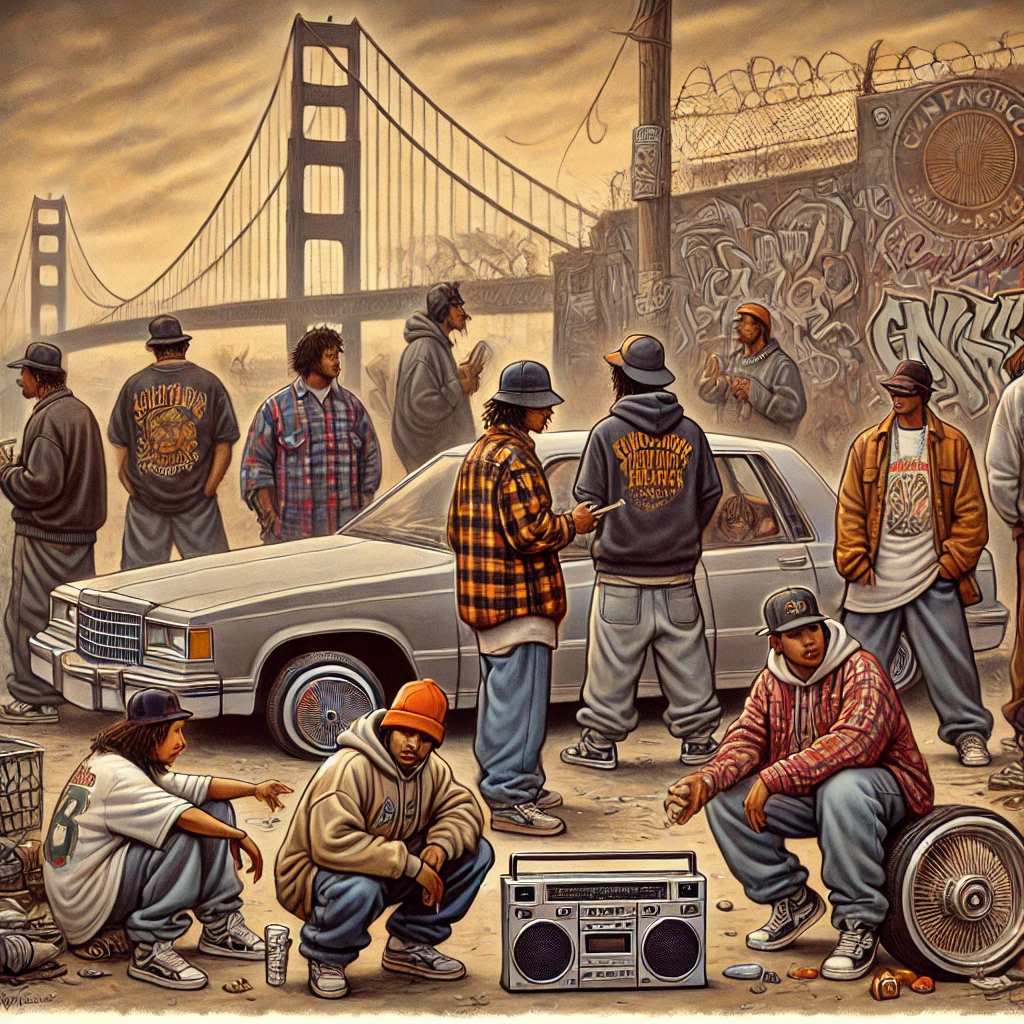
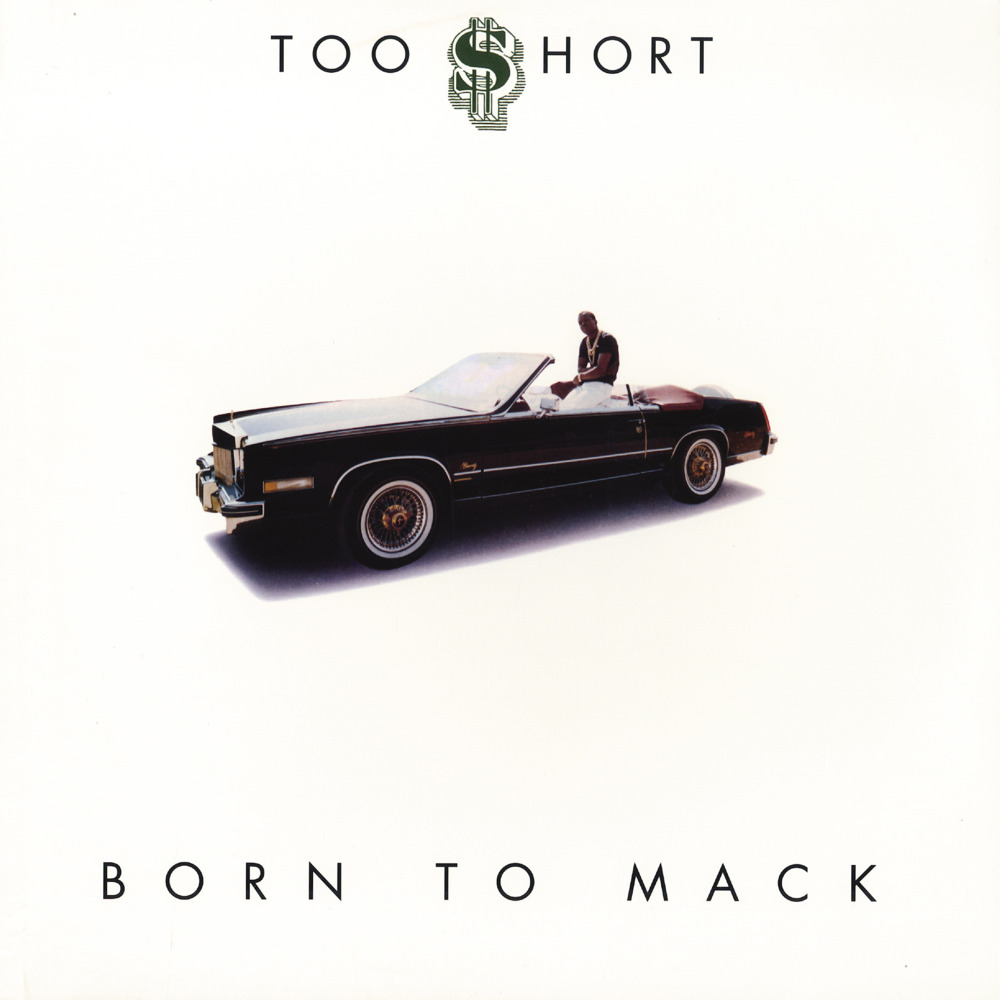
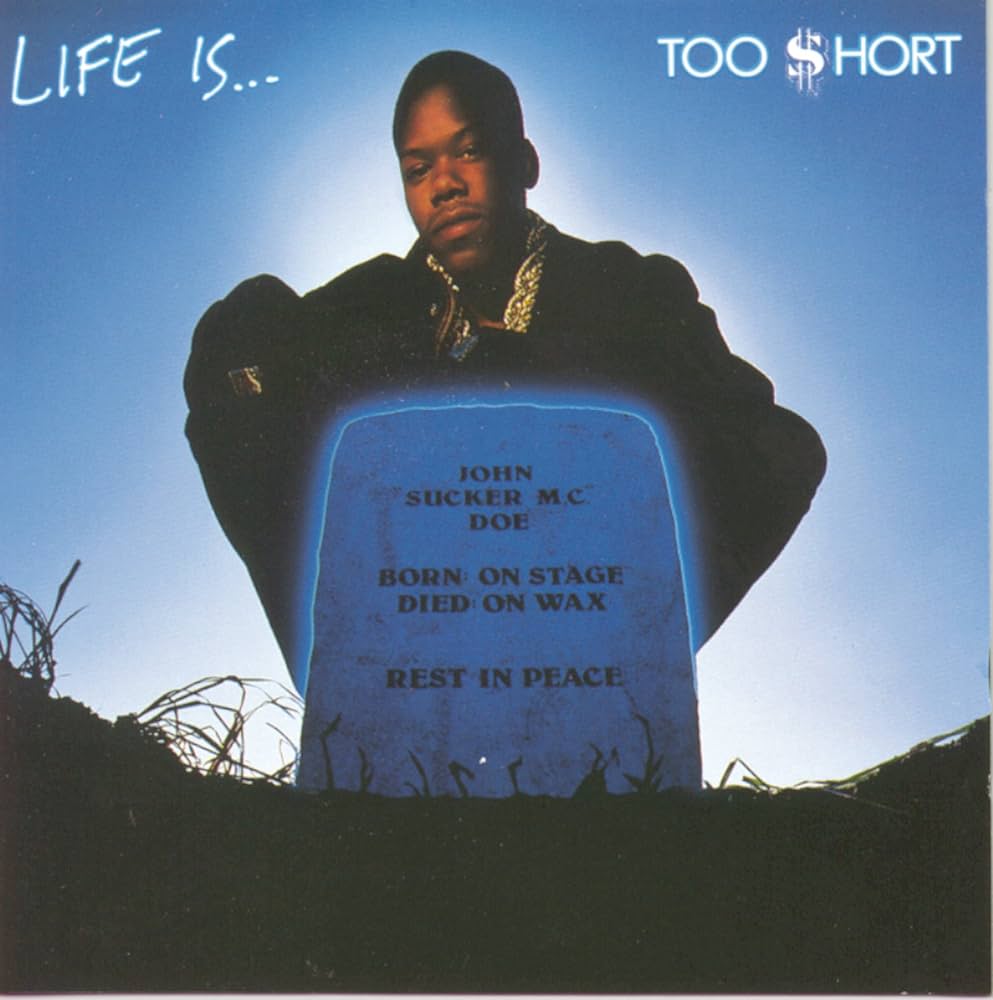
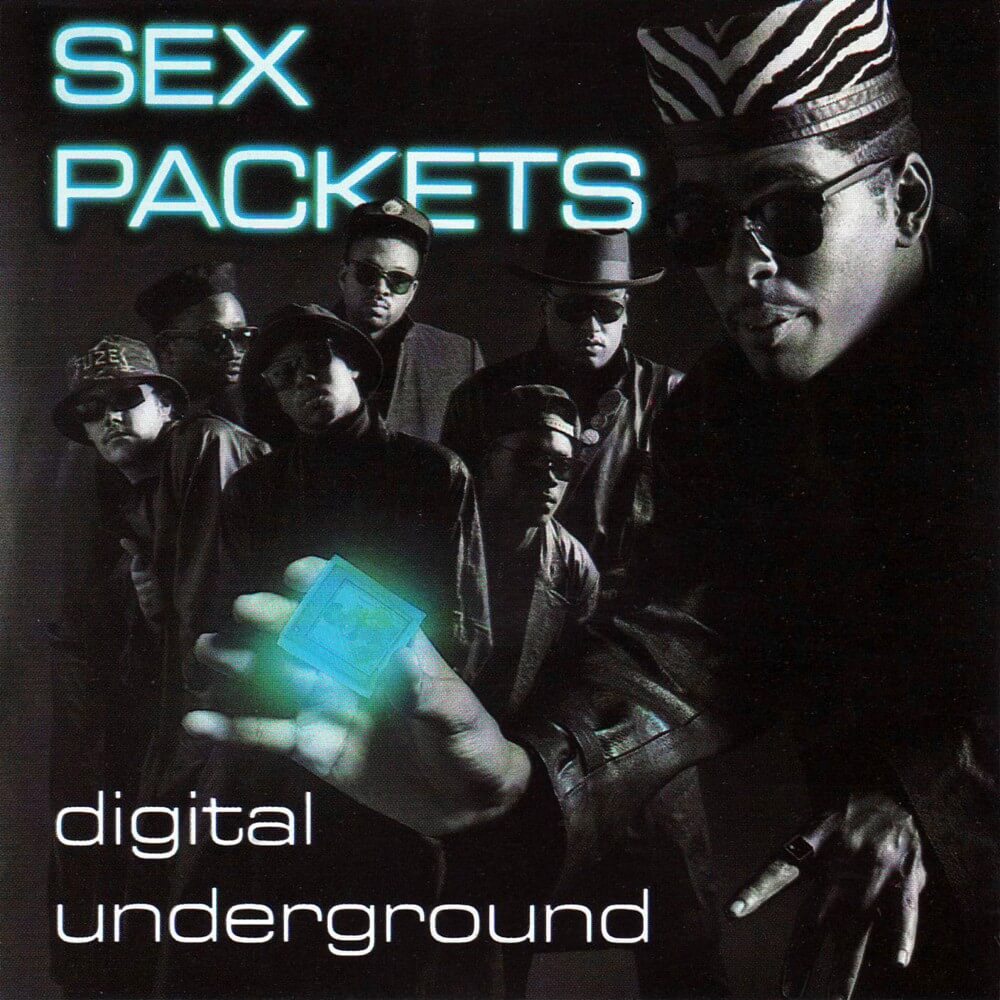

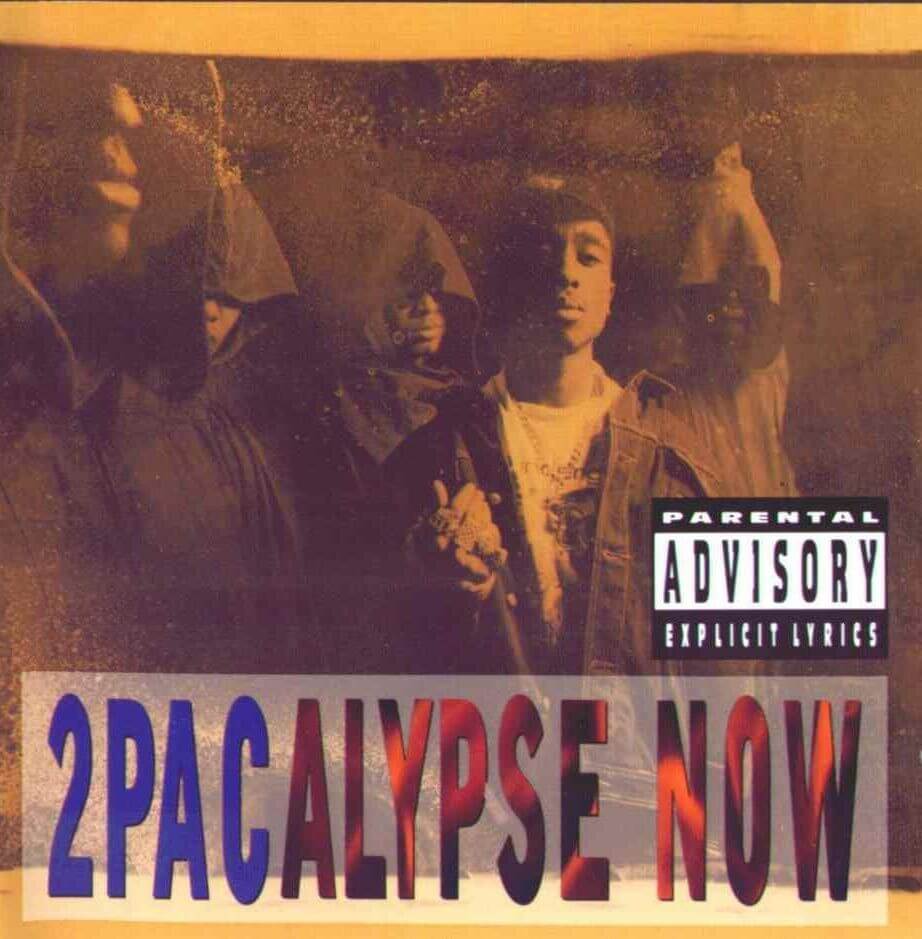
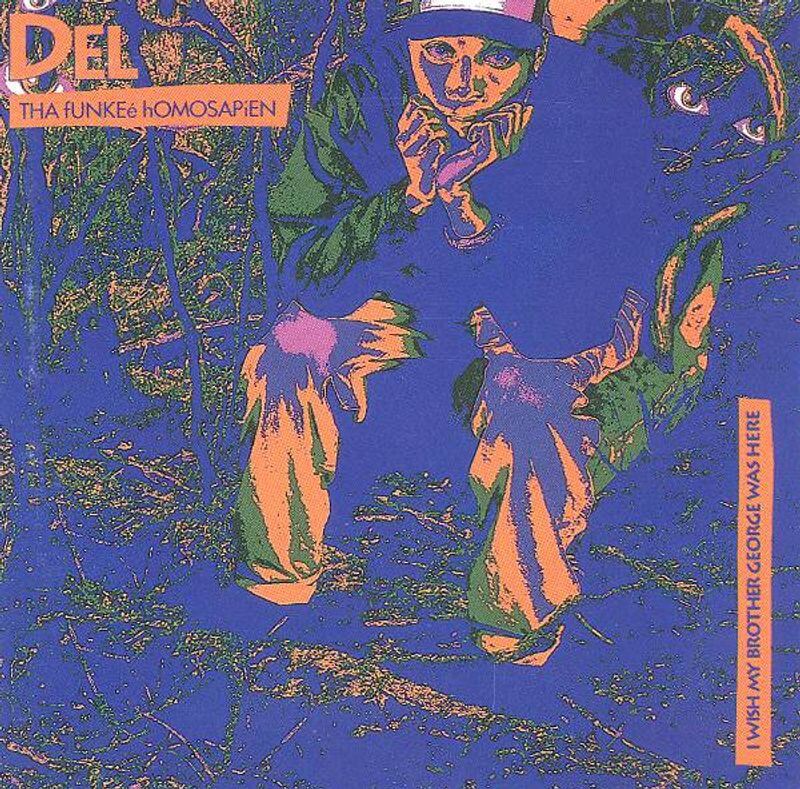



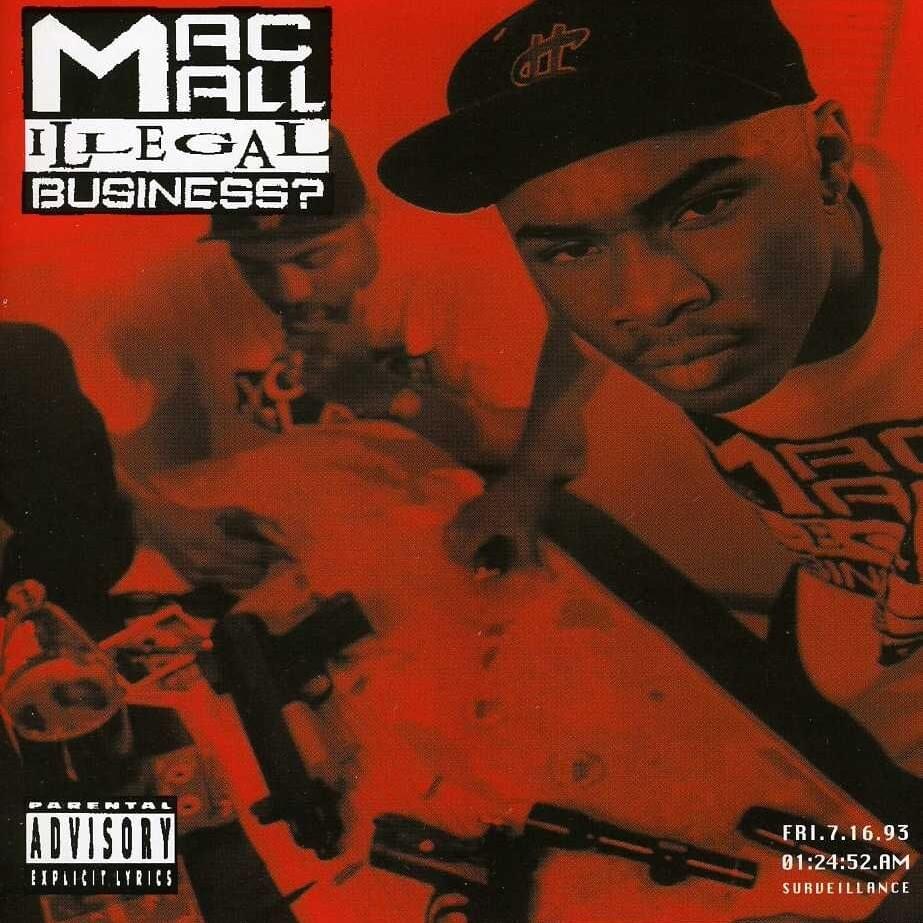

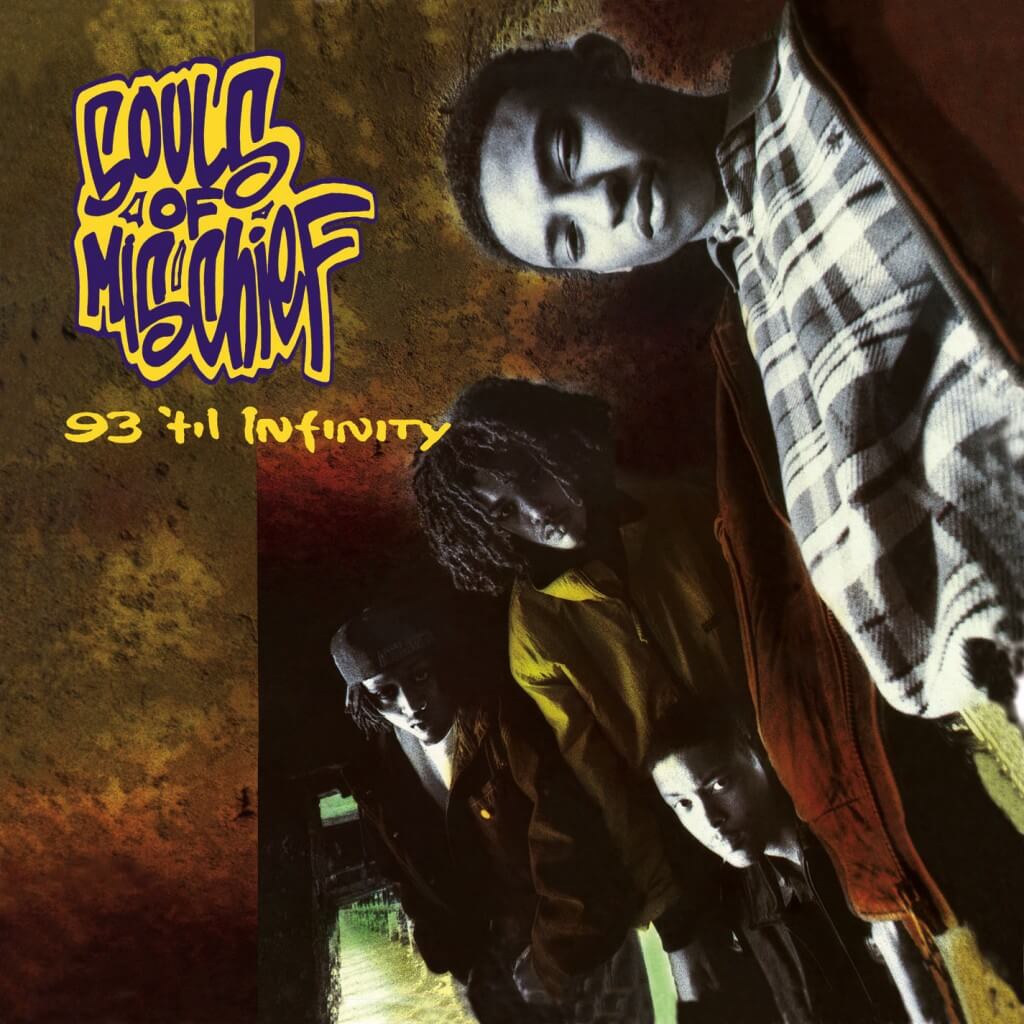
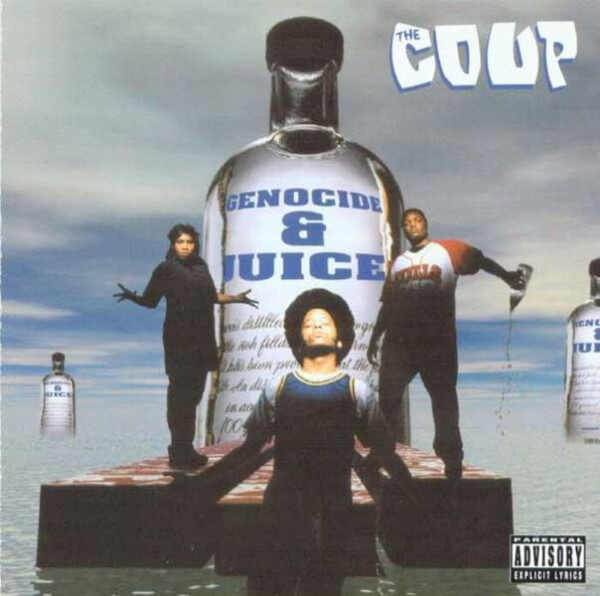
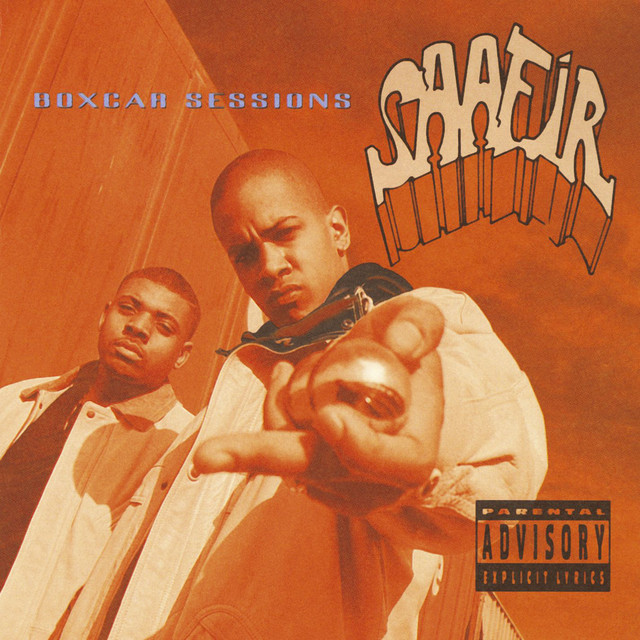

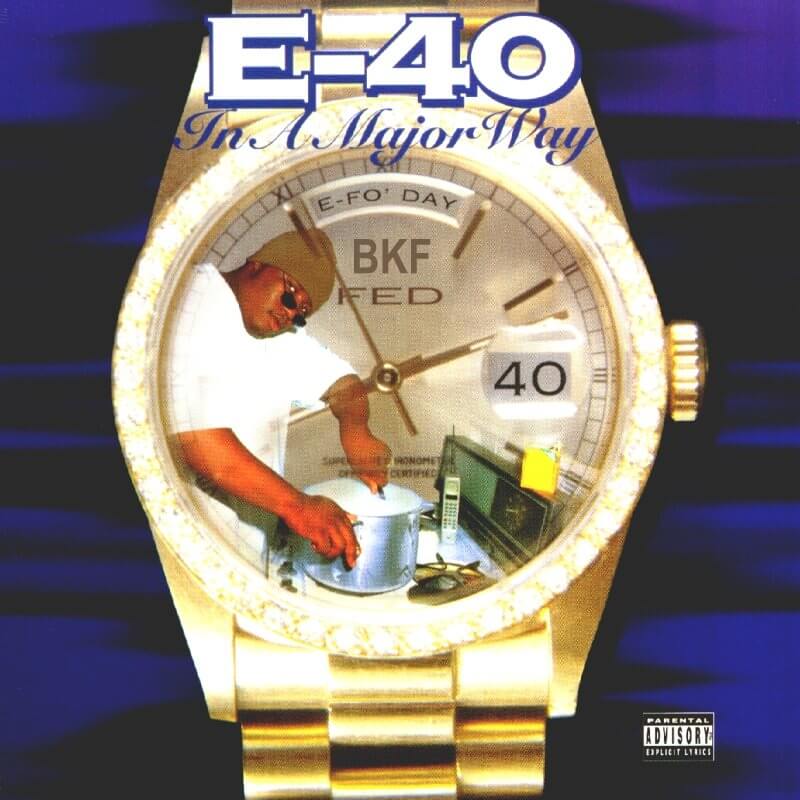
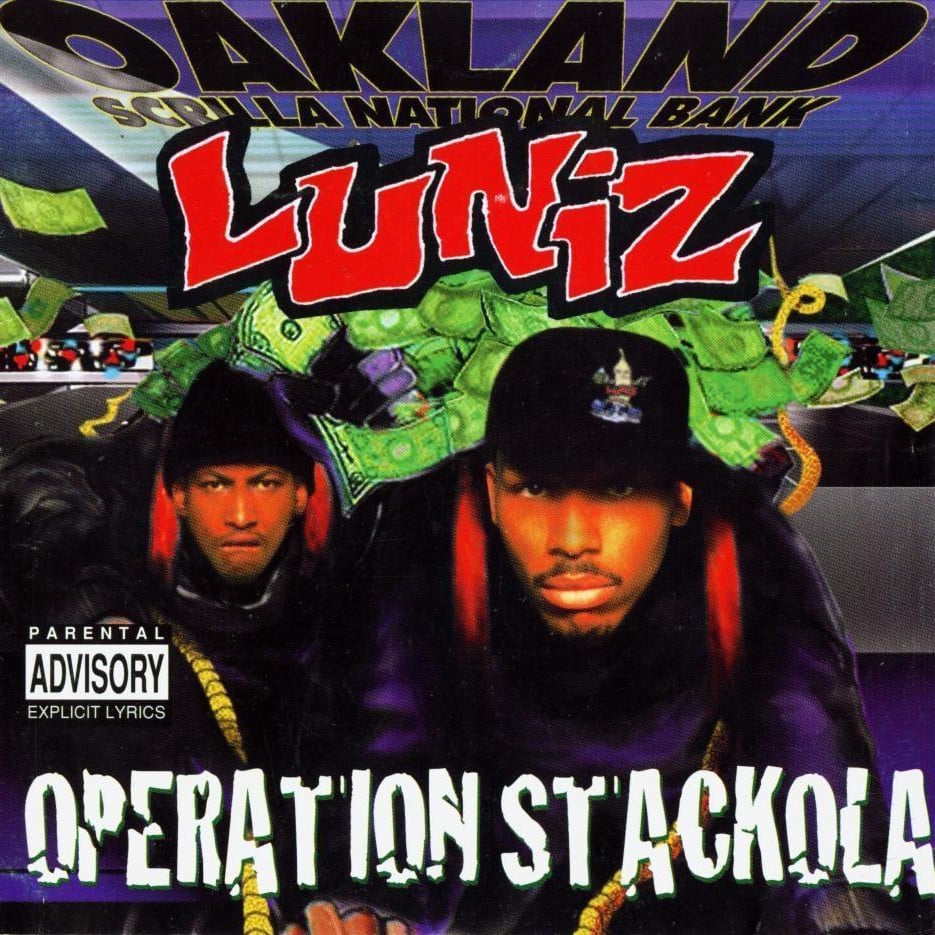
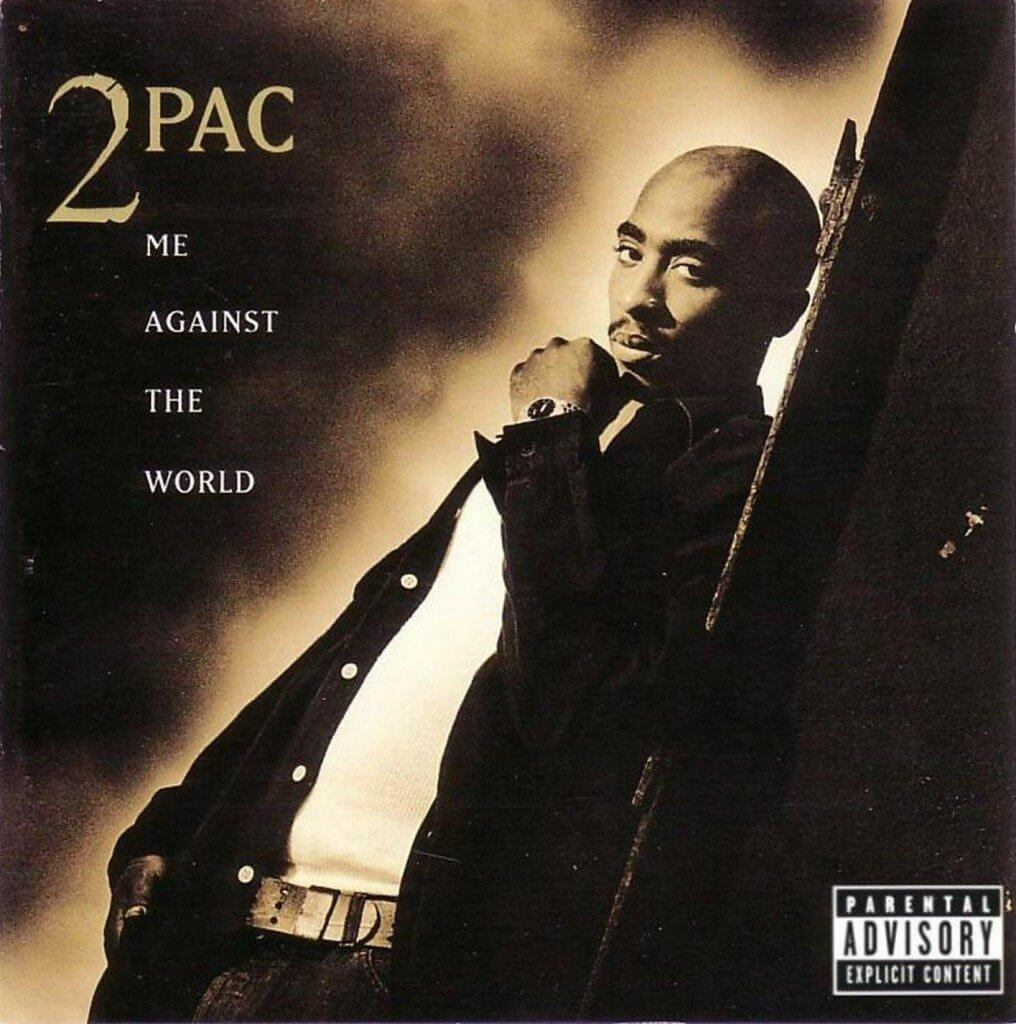
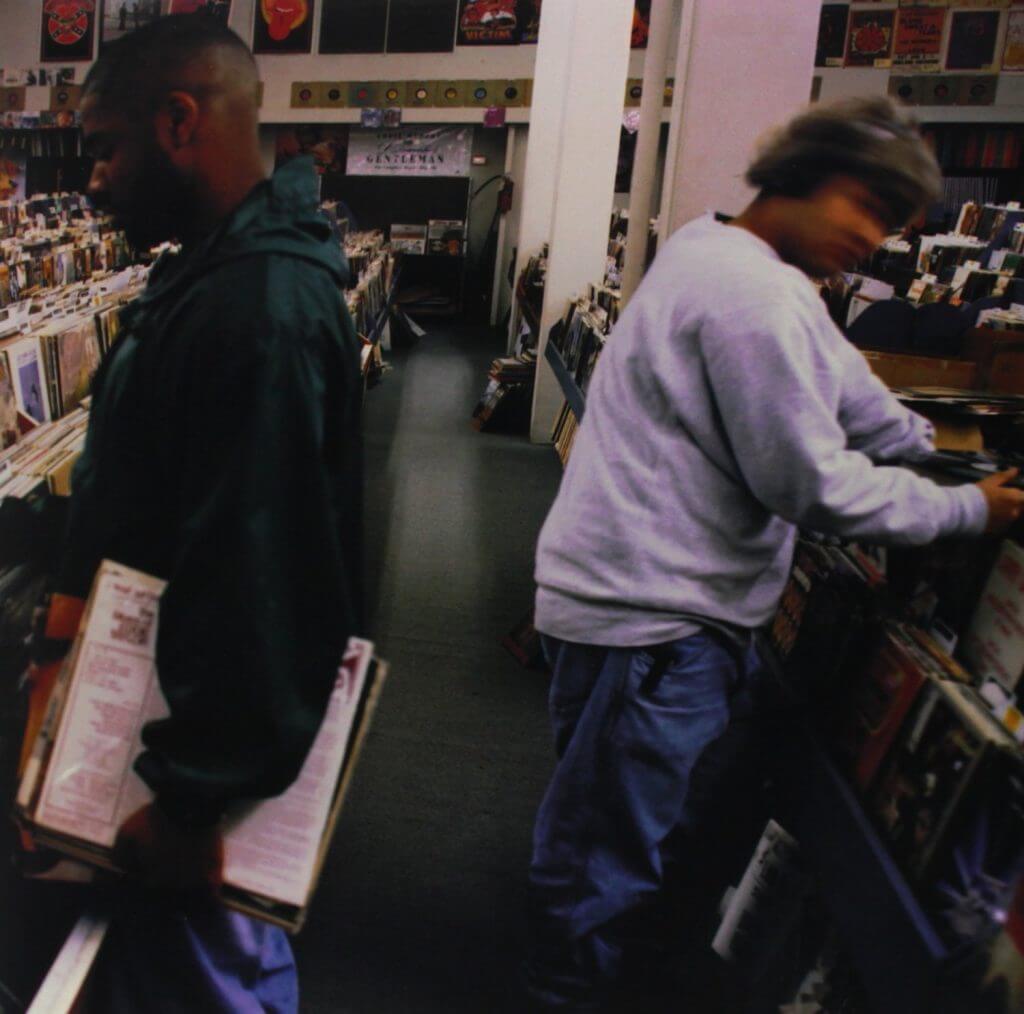
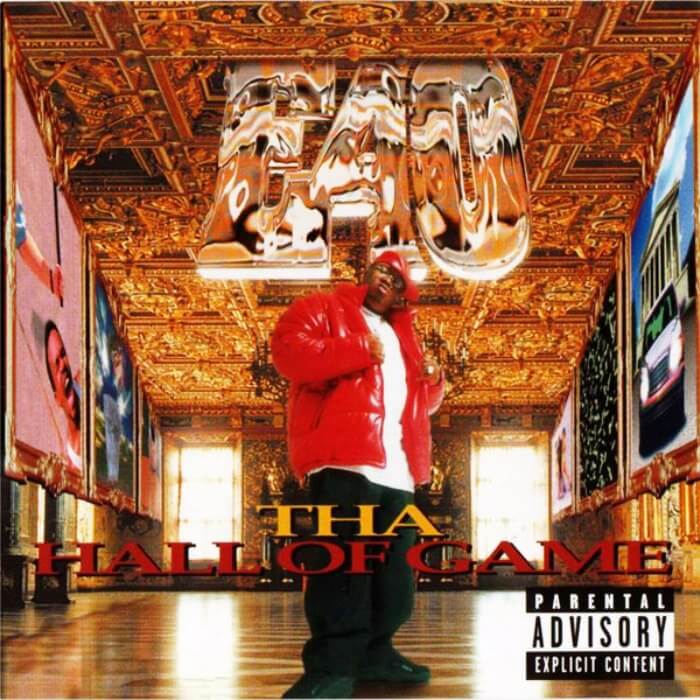
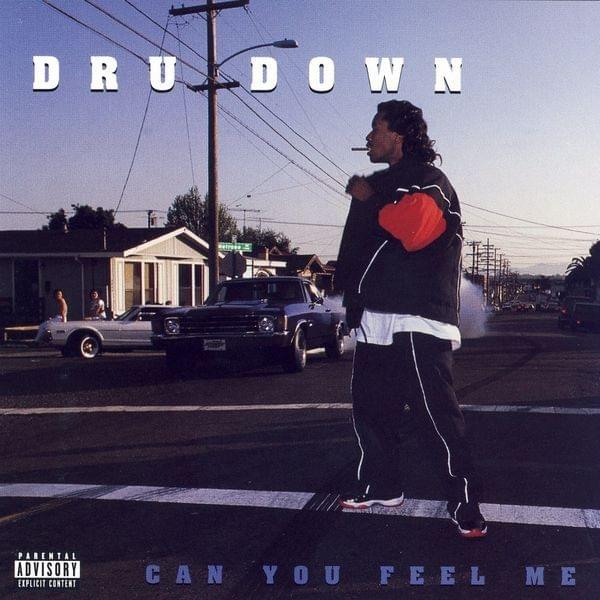
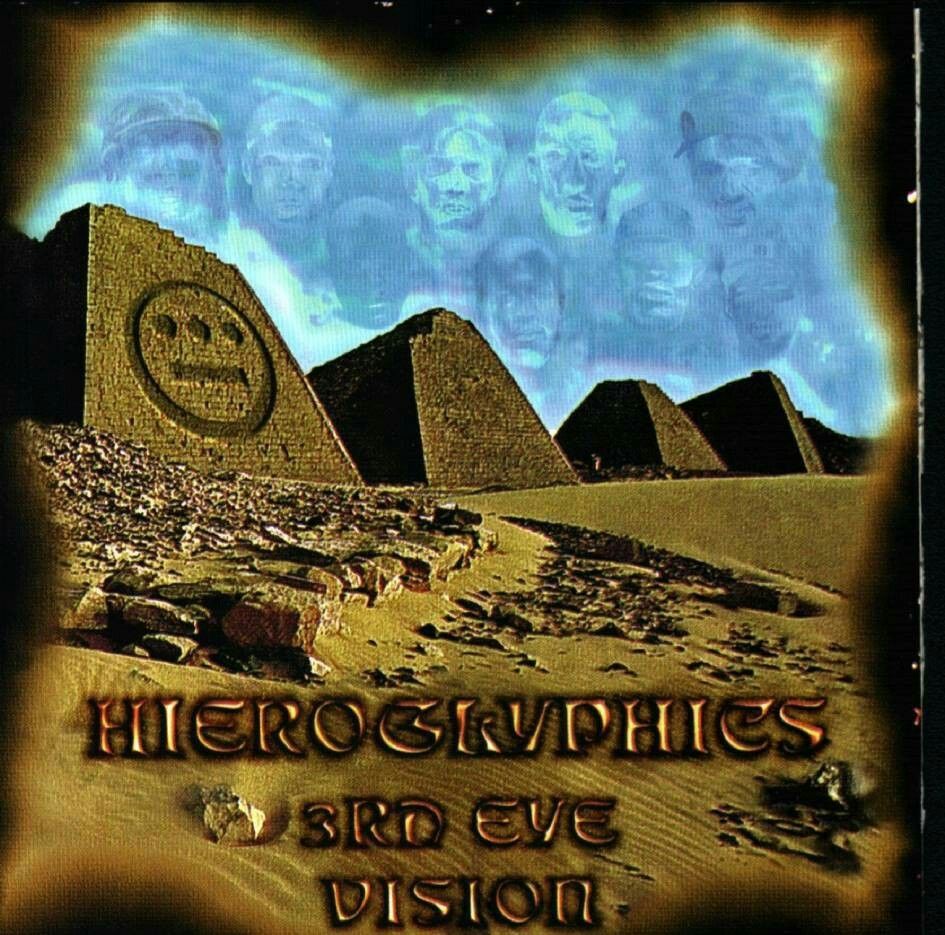
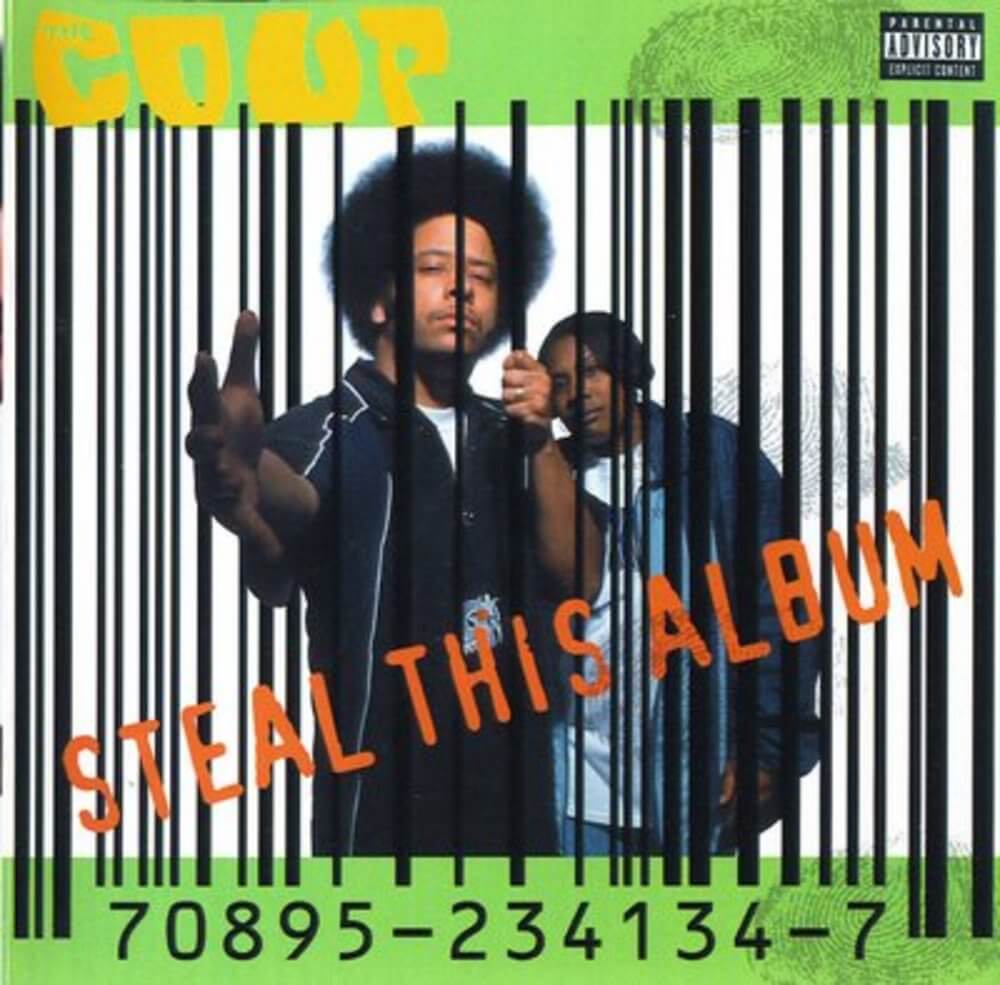

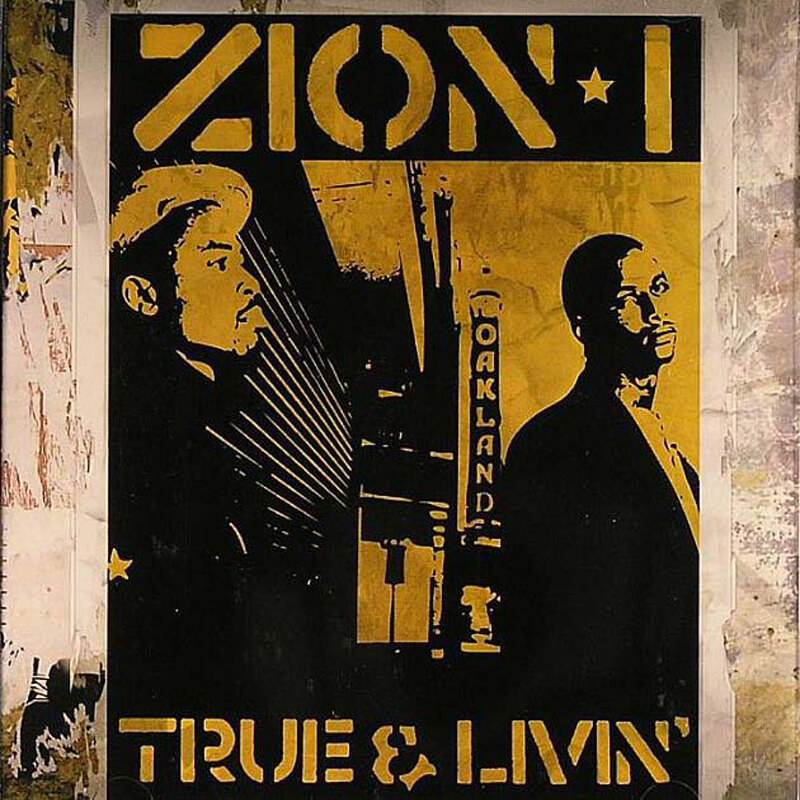
The list is good, with 1 GLARING omission. Don’t Fight The Feelin’ is a certified classic. I’d probably have included Yukmouth’s “Thugged Out, the Albulation” as well, but it’s debatable.